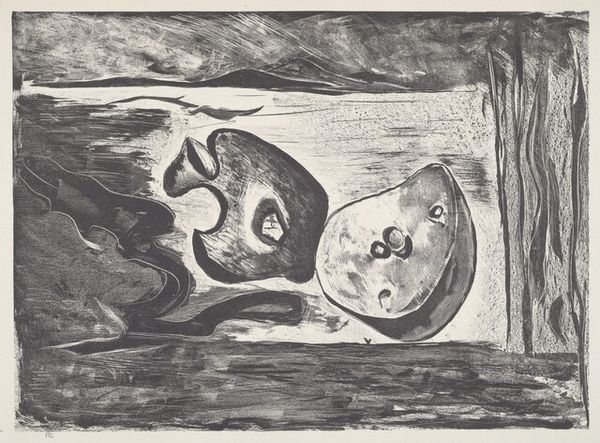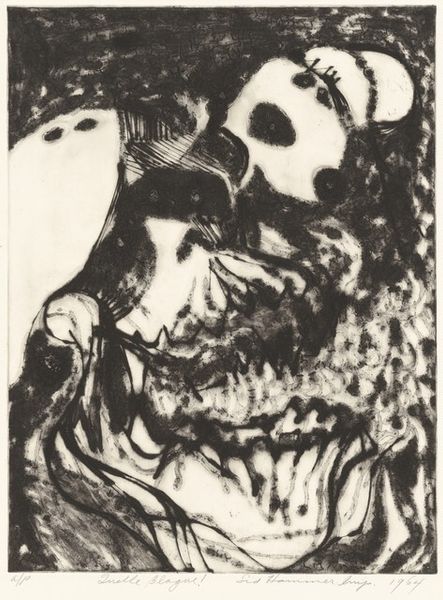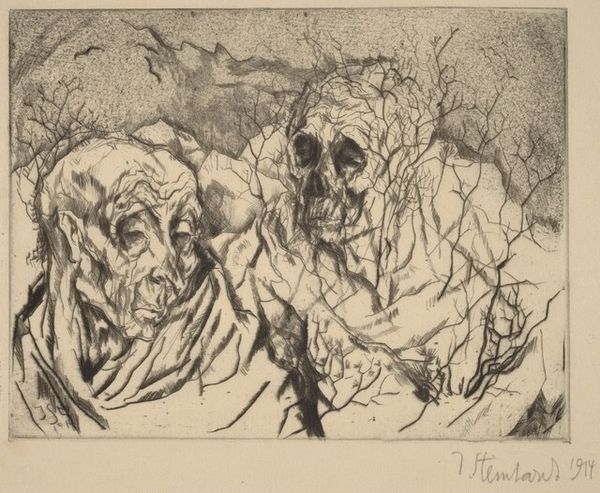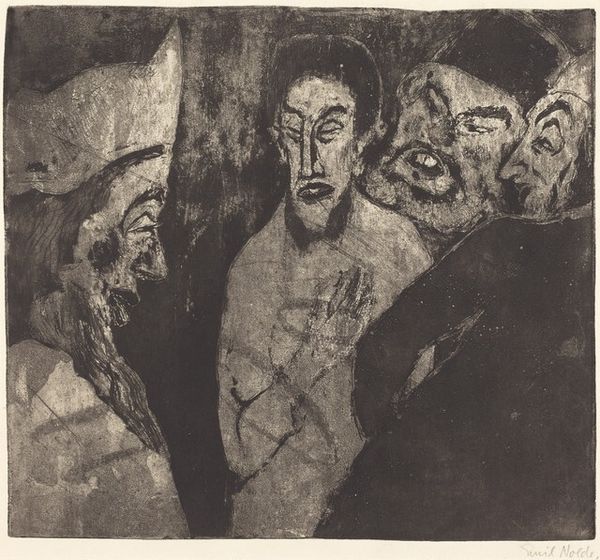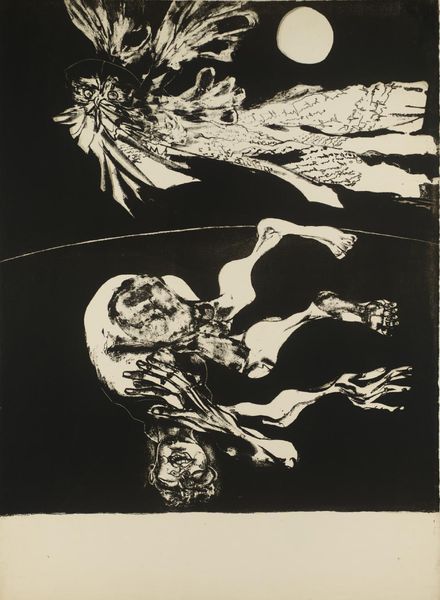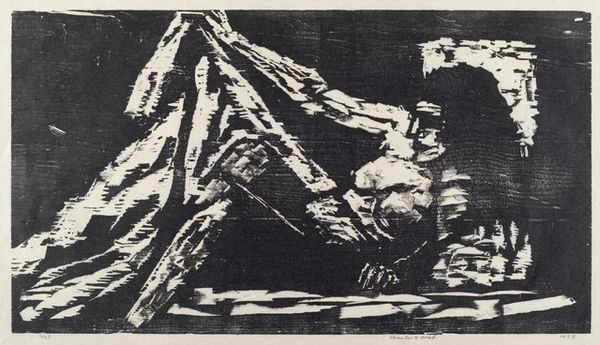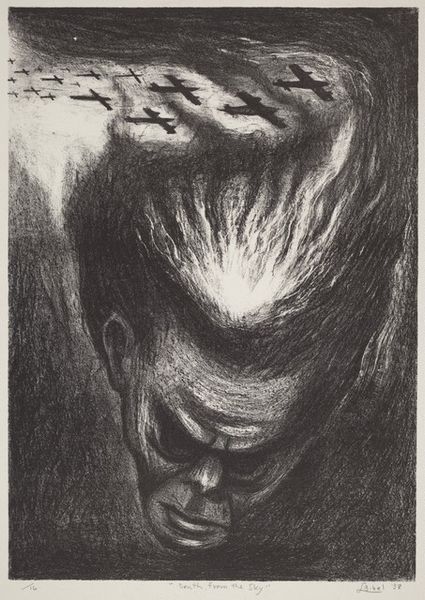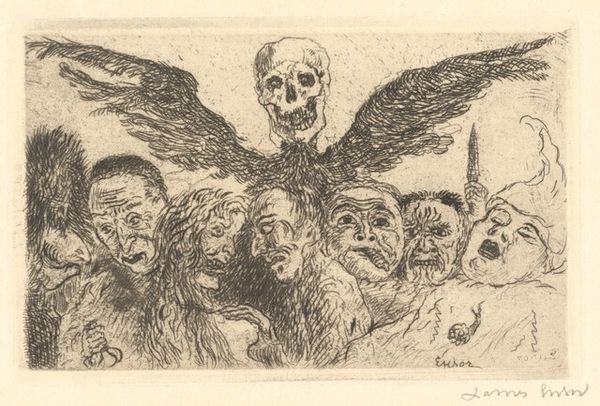
print, etching, intaglio
#
new-objectivity
#
ink drawing
#
narrative-art
# print
#
etching
#
intaglio
#
pencil sketch
#
german-expressionism
#
figuration
#
pencil drawing
#
history-painting
#
academic-art
#
grotesque
#
realism
Dimensions: plate: 19 x 25.6 cm (7 1/2 x 10 1/16 in.) sheet: 34.8 x 47.3 cm (13 11/16 x 18 5/8 in.)
Copyright: National Gallery of Art: CC0 1.0
Otto Dix made this etching, "Corpses Before the Position at Tahure," sometime during or after the First World War. The gray scale is somber, and the marks are vicious. You can see the kind of bile and rage that burns through the process of making this print. Up close, you can see the frenetic scratches and bites Dix made into the plate to create the image. Notice how the lines around the eyes are darker, deeper, as though gouged out, and the way the skin is broken up into a kind of topographical map of trauma. It's as if the artist wants us to feel the horror in our own bodies, wants us to be implicated in the violence. Like Francisco Goya in his "Disasters of War," Dix shows us the grim reality of conflict, where death is not heroic but brutal and dehumanizing. Both artists understood that art can be a powerful tool for bearing witness and challenging the status quo. It’s not pretty, but it's a reminder that art can be a mirror reflecting the darkest parts of ourselves.
Comments
No comments
Be the first to comment and join the conversation on the ultimate creative platform.
